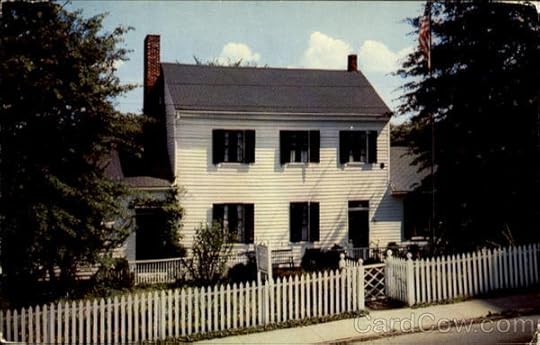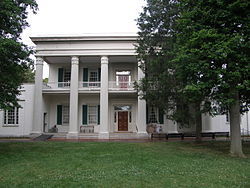History Lessons
Writers of historical fiction love old buildings, especially houses, and I well remember the first one I visited. I grew up in Fountain City, Tennessee and when I was ten I went on a school trip to Blount Mansion (1796) in nearby Knoxville. It’s a handsome but simple structure, its claim to fame being that it was home to Southwest Territorial Governor William Blount and is one of the first frame houses built west of the Allegheny Mountains.
A lot of kids were disappointed because it wasn’t a real mansion, but I was enthralled. We were told not to touch anything, but when nobody was looking I stroked the banister. It felt different somehow, maybe because I wanted it to or maybe because I thought I was touching history. What I recall even more were the smells of must and age. I decided it must be the scent of time. A couple of years later my father took me to Nashville to see my first real mansion, Andrew Jackson’s plantation home, The Hermitage (1835).
With six Doric columns, pure Greek Revival style and period furnishings it was antebellum architecture at its best, but what moved me more were the graves of Jackson and his beloved wife Rachel. I knew from studying Tennessee history that she died right after he was elected President and that he blamed her death on the terrible slander of his campaign. When I saw them peacefully together for all eternity I realized that it was more than buildings and furnishings that imparted a sense of history. There was emotional impact as well.
In 1967 while a student at GeorgiaStateUniversity in Atlanta, I needed a summer rental before heading off to Navy boot camp in Memphis. Someone told me about Windsor House (1899) on Crescent Avenue in midtown. The three-story structure was owned by brothers Leon and George Cabero who had apartments on the ground floor. It had been renovated many times and definitely seen better days, but it was fine for a college student. I happily moved into my little furnished studio on the second floor but soon sensed that there was something topsy-turvy about the place. George explained that it was originally a one-family home facing Peachtree Street, Atlanta’s most famous thoroughfare, and that in 1914 it was set back to make room for commercial buildings on Peachtree and divided into ten apartments. What bothered me was that the front of the house was now the back. It was derelict when the brothers bought and renovated it three years earlier, but George insisted their rescue wasn’t just about financial gain. ”This is one of the most important historic sites in Atlanta,” he said. “Do you know what famous local writer lived in the apartment below yours?” I knew only one famous Atlanta writer and the back of my neck burned when I realized what was coming. “Yes indeed, young man,” George beamed. “This is where Margaret Mitchell wrote the book!”
But that’s a whole other blog.
Part 1 of a series on living with history.







